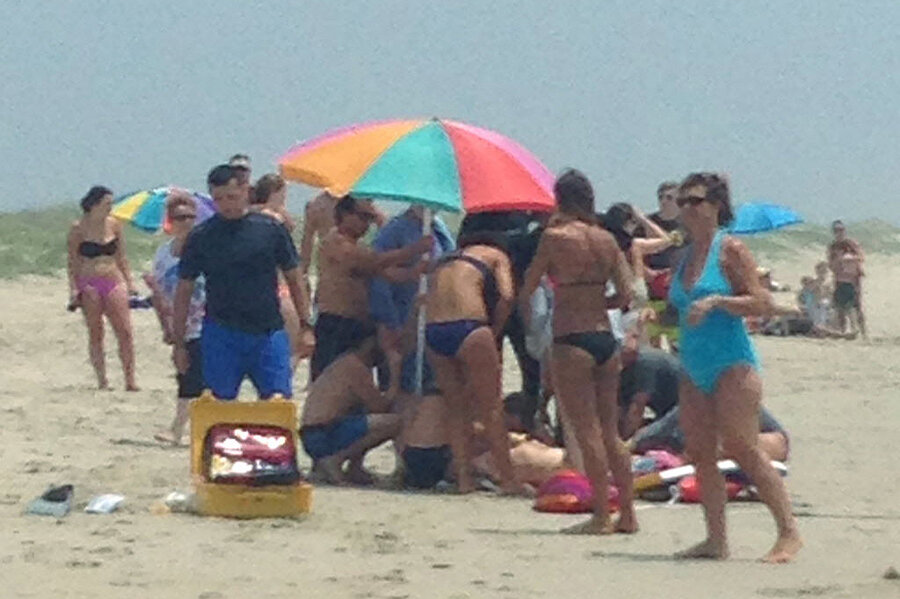What's bringing sharks to the Carolinas?
Loading...
The attack by a shark on former Boston Herald editor-in-chief Andrew Costello marks the seventh such incident in North Carolina this year, and the 10th in the Carolinas. Though the year is just halfway over, the Carolinas have already surpassed their average of six shark attacks per year, CNN reported.
George Burgess, director of the International Shark Attack File at the Florida Museum of Natural History, laid out for National Geographic the “perfect storm” of ecological factors most likely working in tandem to build an environment where shark attacks abound, including rising temperatures and unsafe fishing practices. There are, however, measures people can take to reduce the likelihood of attracting sharks.
Warm weather, National Geographic reported, is attractive to both sharks and swimmers – and North Carolina got warm early this year. Shark attacks in the state are most common when the water hits about 80 degrees Fahrenheit, which first happened in April. With more people at the beach cooling off in the ocean, and more sharks swimming in pursuit of warm water, the two populations are sharing more space than they are used to.
Mr. Burgess also said sharks prefer water with a higher concentration of salt. Since North Carolina has been experiencing a drought, the rainwater that usually dilutes the coastal waters has been missing, leading to saltier shorelines.
A sudden abundance of food in the area also plays a role in attracting hungry sharks – and this one, Burgess said, humans can be proactive about. While North Carolina’s coast has seen an increase in menhaden – little “bait fish” sharks pursue over long distances – due to strong currents flowing north, sharks are also attracted to fishing spots, meaning communities can mitigate danger by making sure swimming and fishing do not happen in the same place.
“There is no doubt that fishing is an attractant to sharks,” Burgess said.
As for global warming, its potential role in inviting shark attacks is debatable. Burgess said the effect it has on water temperatures is enough to draw a plausible connection between climate change and shark attacks.
“Clearly global climate change is a reality and it has resulted in warmer temperatures in certain places at certain times,” he said.
But Frank K. Schwartz, University of North Carolina at Chapel Hill shark biologist, begs to differ. Mr. Schwartz also told National Geographic that temperatures and water currents tend to fluctuate too much to draw any real conclusions.
Additionally, though it may seem like lately the shark attacks have been endless, Schwartz said the numbers are really too low to do any kind of statistical analysis.
While Schwartz said most shark bites are simply the result of “being in the wrong place at the wrong time,” the Florida Museum released several pieces of advice for beach-goers.
Swimmers should avoid areas of water where bait is dropped, should not swim with open wounds or shiny objects, and should not swim “at night or during or after storms, which can make the water cloudy and churn up the bait fish that lead to shark feeding frenzies,” National Geographic reported.
In the event of an attack, the Florida Museum recommends hitting the shark in the nose, or scratching at its eyes or gills. “One should not act passively if under attack … sharks respect size and power.”






